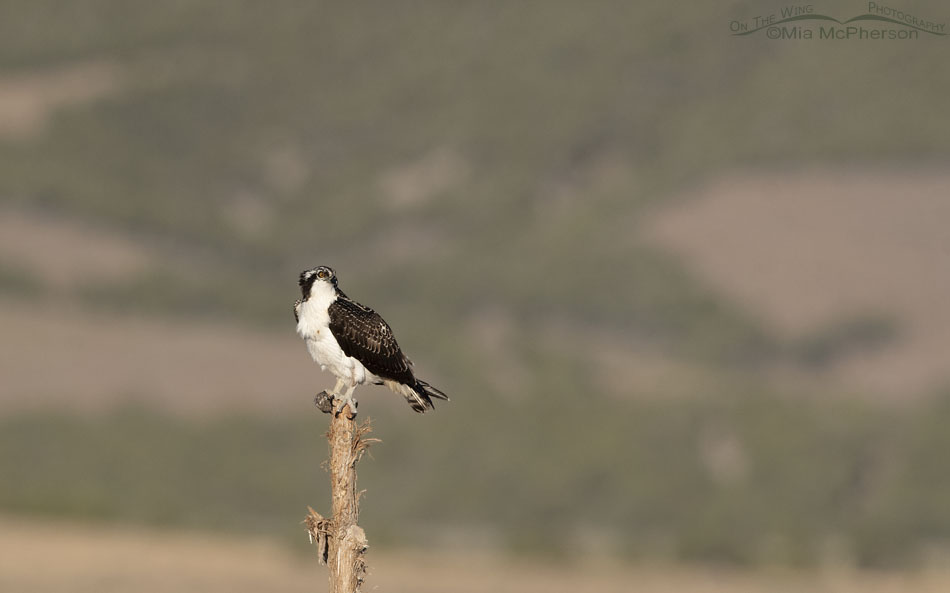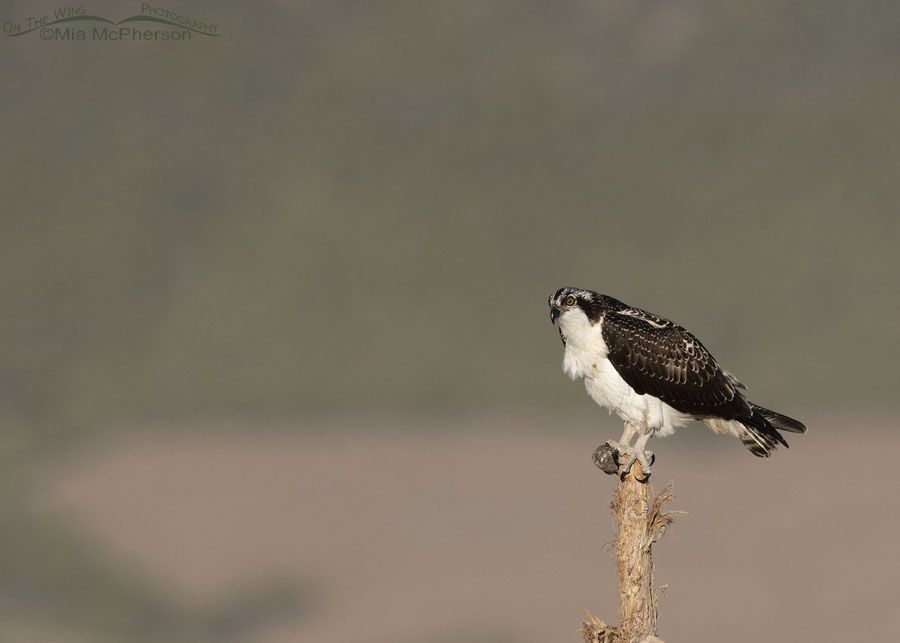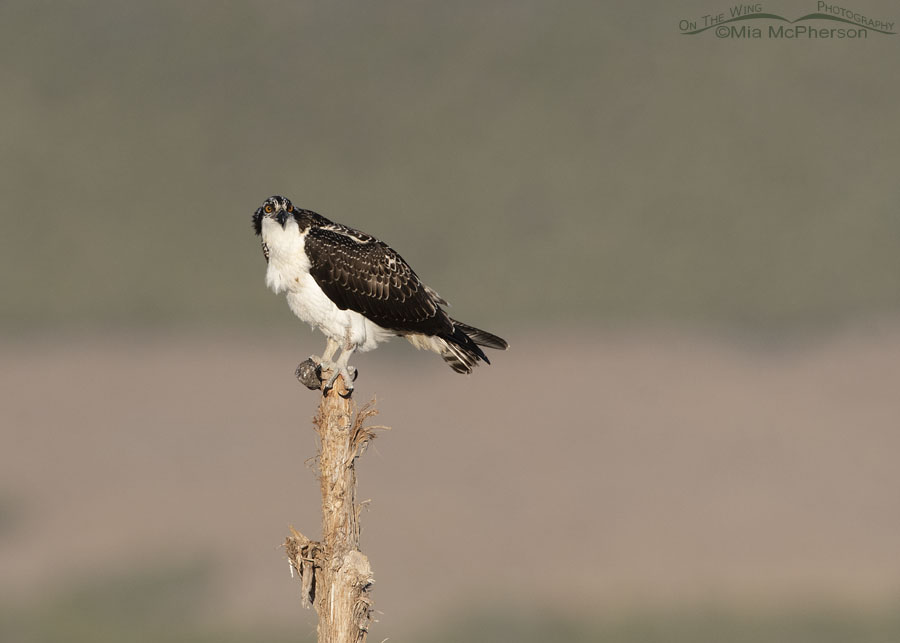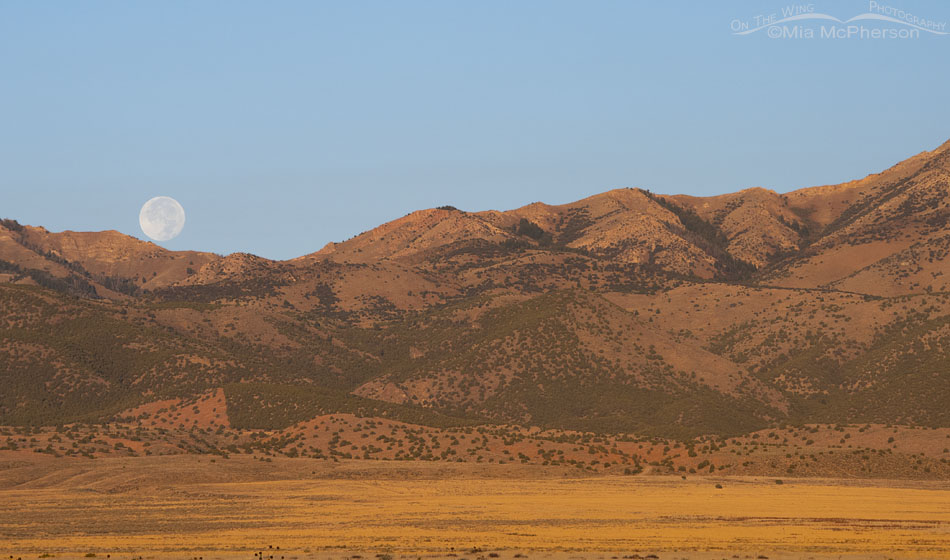 Immature Osprey in the West Desert of Utah – Nikon D500, f7.1, 1/1600, ISO 640, Nikkor 500mm VR with 1.4x TC, natural light, not baited
Immature Osprey in the West Desert of Utah – Nikon D500, f7.1, 1/1600, ISO 640, Nikkor 500mm VR with 1.4x TC, natural light, not baited
Expect the unexpected.
I don’t know how many times I have said “expect the unexpected” since I began photographing birds while talking to fellow photographers. I live by those words because you just never know what bird might show up in the strangest place. A White-tailed Kite in a Florida county where they hadn’t been seen in nearly 100 years. An Upland Sandpiper in the sagebrush steppe. A Baltimore Oriole in the Wasatch Mountains. A Pair of Mountain Plovers on Antelope Island. When I expect the unexpected I pay more attention to the world around me. I also know that paying attention means I see more birds. People that always have their faces glued to their phones miss birds.
Yesterday I hopped into my Jeep and headed for the West Desert of Utah for some peace and quiet hoping to escape all the negativity going on in our country so I could relax and hopefully find some birds.
When I got to where I the hard top road ended and the gravel road began I turned on my camera and got ready.
In the distance I saw a large bird perched on a wooden fence post and I hoped that I’d be taking images of a young Ferruginous Hawk that I know has been hanging out in that location because I saw a bright white breast on the bird.
As I drove slowly forward and could start to make out more ID features of the perched raptor I identified the bird as an Osprey. In the desert.
 Immature Osprey in a desert setting – Nikon D500, f7.1, 1/2000, ISO 640, Nikkor 500mm VR with 1.4x TC, natural light, not baited
Immature Osprey in a desert setting – Nikon D500, f7.1, 1/2000, ISO 640, Nikkor 500mm VR with 1.4x TC, natural light, not baited
It wasn’t until I got my lens up and focused on the bird that I realized that it was hatch year Osprey. Because I know birds I know that some young birds tend to wander to places a person might not expect them to be, especially during migration. I wouldn’t normally see Ospreys in this area because they are fish eaters and I was in a desert location.
However; there is a man made reservoir less than a quarter of a mile from where I photographed this young Osprey and I know that it is stocked with fish so the young fish hawk isn’t as much of a “Wrong Way Corrigan” and you might be thinking. The young Osprey just laid over briefly on its first migration to fuel up for its long journey.
 Immature Osprey perched on a fence post in the West Desert – Nikon D500, f7.1, 1/2000, ISO 640, Nikkor 500mm VR with 1.4x TC, natural light, not baited
Immature Osprey perched on a fence post in the West Desert – Nikon D500, f7.1, 1/2000, ISO 640, Nikkor 500mm VR with 1.4x TC, natural light, not baited
I wish I could say that seeing and photographing this immature Osprey made up for the experience I had last week where I spotted an Osprey with prey flying high over East Canyon in the Wasatch Mountains. I couldn’t get photos of it because the automatic window of the vehicle where I sitting was locked in the down position when I needed to roll it up to focus on the bird in the sky but it doesn’t. It truly doesn’t. I should have had photos of both Ospreys.
Yet photographing an immature Osprey in the desert isn’t something that happens all that frequently to me and I have to admit I was thrilled to see it perched in front of the mountains. I have good experiences.
 Moon setting over the Stansbury Mountains at sunrise – Nikon D810, f11, 1/2000, ISO 320, Nikkor Nikkor 18-200mm at 105mm, natural light
Moon setting over the Stansbury Mountains at sunrise – Nikon D810, f11, 1/2000, ISO 320, Nikkor Nikkor 18-200mm at 105mm, natural light
I thought I’d include a photo of what the mountains that were behind the Osprey look like. This photo was taken October 6, 2017 and it shows the same mountain range that the young Osprey was perched in front of as a Harvest moon was setting and the sun was rising.
The young Osprey was my best bird of the day. After I photographed it I enjoyed the quiet solitude of the mountain canyons while seeing and hearing a few more birds.
Life is good.
Mia
Click here to see more of my Osprey photos plus facts and information about this species.


What a beautiful bird! Even as a young Osprey…predatory power seems to radiate from him (?). Your landscape pic is spectacular. Thanks Mia.
I always enjoy your bird photos, such as the tack sharp presentation of the young osprey, but your landscape is a beauty! Thanks for sharing.
Hope this little loner makes it. Your panorama shot is breathtaking, Mia.
Mia, thanks for the posting of the Osprey. I tried to see if it was banded, but don’t think so. I watch two Osprey nests during the spring and summer on the Missoula, Mt web cams. So I wonder if some you see have come from those nests. One nest at the Missoula campus has not produced off spring for two years, but several other nests nearby have. Thanks for your sharing.
Love the panorama! Yes, you cannot program your day and it is best to accept what is delivered. I am always looking for Bobcats and Coyotes when I am birding, but they almost always appear at other times. I won’t stop looking but they are so unpredictable as to where, when and how. I think of all the times they must be out in plain sight when I am not around or not looking.
Expect the unexpected is as true of life as it is of photography.
Mind you, my heart strings were tugged when you mentioned the osprey’s begging call. I suspect its parents are a long way away. I hope it survives and thrives.
Beautiful! Another photographer found a moose in the desert and now you found a osprey. Animals on the move!
Great posting! The landscape shot really puts the Osprey in context. As photographers ,I think we often concentrate so much on the bird that we miss the bigger picture.
Doesn’t it have prey?
Sue, I meant to explain that and in my rush to publish this morning I forgot. It does look like the Osprey has prey but that is a knot or burl in the juniper fence post, not a fish.
My favourite bird Mia! We have a lot of Osprey here around the Kootenay Lake in the south eastern part of B.C. Although this year the count of Osprey chicks appears to be down and most have left on their migration but yesterday late afternoon I heard one calling. A few weeks ago I got some shots of one having a bath in an inlet where the lake turns into the Kootenay River. Thank you for sharing Mia.
Thanks Shirley. I love to hear Ospreys call and this one did but it was more like the begging call of a younger osprey in the nest begging for food from its parents. Made me grin.